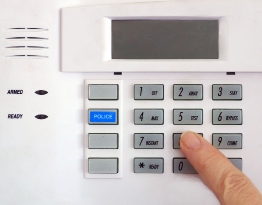Lesson 2: Multiplying Polynomials
Module 3: Polynomials
Lesson 2: Multiplying Polynomials
Focus
 © Laurin Rinder/shutterstock
© Laurin Rinder/shutterstock Throughout this unit you have been examining ciphers. For a cipher to be useful, several things must be known by those who are using it:
- the algorithm, or method, used to encipher the plaintext
- the key used with the algorithm to allow the plaintext to be both enciphered and deciphered
- the period of time during which the key is valid
As an analogy you would put a key in a lock to open the door to get into your home. This process (e.g., the use of a key and a lock) is the method or algorithm. Now this method only works if you have the proper key to put in the lock, and your key will be valid only as long as you live in that house. The next owner will have the locks changed so that you cannot enter, even though you may know the method.
Now you may have a new system that uses a code instead of a physical key. This system requires that you pick a security code for your home’s alarm system. It’s very important that you remember the security code and that you follow a few guidelines. It could be a terrible situation if you chose a code that allows intruders to crack the code easily and gain access into your home. For instance, you are advised not to use phone numbers, birthdays, anniversary dates, or other special dates for security codes because these are too easy for other people to find or to guess.
Your new skills in working with polynomials and verification in this lesson may help you in setting codes that are very difficult to guess.
Outcomes
At the end of this lesson, you will be able to
- verify a polynomial product by substituting numbers for the variables
- multiply two polynomials symbolically and combine like terms in the product
- generalize and explain a strategy for multiplication of polynomials
- identify and explain errors in a solution for a polynomial multiplication
Lesson Questions
- How is the distributive property extended to solve multiplication problems as well as other types of problems?
- How can you tell if two polynomials have been multiplied correctly?
 Lesson Completion and Assessment
Lesson Completion and Assessment
As you work through each lesson, complete all the questions and learning activities in your binder using paper and pencil, clearly labeling your work (they refer to this as your course folder). These include the Are you Ready, Try This, Share and Self Check questions. Check your work if answers are provided. Remember that these questions provide you with the practice and feedback that you need to successfully complete this course.
Once you have completed all of the learning activities, take the Lesson Quiz. This is the assessment for each lesson and is located under the Assess tab or by using the Quizzes link under the Activities block.
** Note – Share questions may have to be done on your own depending on your learning situation**